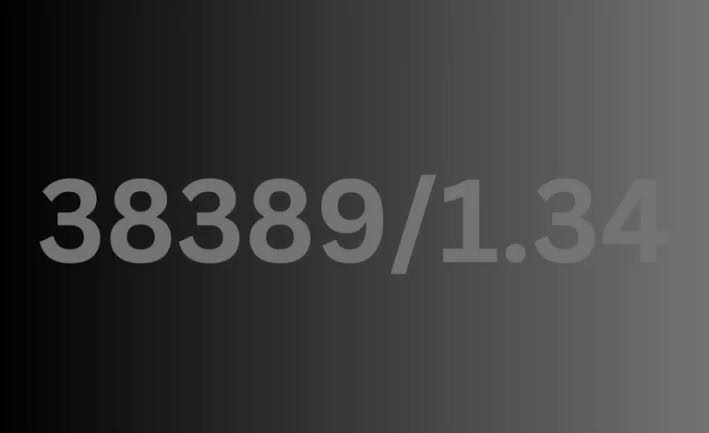Numbers can be confusing, especially when they look like (38389/1.34). But this is just a simple division problem with real-world uses. In this post, we’ll break down this calculation, explain why it matters, and show you how it fits into everyday life. Let’s make sense of it.
What Is (38389/1.34)?
The expression (38389/1.34) looks complex, but it’s really just a division problem. When you divide 38,389 by 1.34, you get 28,643.28. But the meaning behind it depends on the situation. Here are some places where you might see numbers like this:
Common Uses of (38389/1.34)
1. Currency Exchange:
Imagine you’re converting dollars to euros. You have 38,389 dollars, and the exchange rate is 1.34. To find out how much money you’d get in euros, divide 38,389 by 1.34. The result, 28,643.28, is the amount you’ll have after the exchange.
2. Financial Calculations:
Financial experts use numbers like these for cost analysis or stock prices. If 38,389 represents an amount of money and 1.34 is a rate of inflation or a percentage change, the division gives you the adjusted value.
3. Data Analysis:
In statistics or data analysis, 38,389 could be a total population or dataset. The 1.34 might be a growth rate, giving you the result of a population change or trend over time. These kinds of calculations help people understand data better.
Breaking Down the Numbers
To understand this formula better, let’s look at what 38,389 and 1.34 might mean in practical terms:
- 38,389: This could be a large total, like sales, population figures, or revenue.
- 1.34: This might be a rate or conversion factor, like currency rates, percentages, or inflation figures.
Dividing these numbers helps reduce a large figure into something more useful or understandable. It makes complex numbers easier to work with.
How Does (38389/1.34) Apply to Real Life?
Even though this looks like a random formula, it’s very useful. If you ever deal with currencies, budgeting, or business, you’ll probably use calculations like (38389/1.34). Dividing numbers gives you a clearer picture of costs, values, or trends. It’s a quick way to simplify big data.
A Quick Example
Let’s say you’re traveling to Europe with $38,389 in your pocket. The exchange rate is 1.34 dollars per euro. To know how many euros you’ll get, divide the two numbers. The result is 28,643.28 euros. This type of quick math is something travelers and business owners do every day to make sense of their money across borders.
Conclusion
Even a number like (38389/1.34) has its place in everyday life. Whether you’re converting money, analyzing data, or looking at sales numbers, understanding how to break down large values into smaller, more manageable ones is important. Simple calculations like these can help you make better decisions, whether it’s for your business or your personal finances.
FAQs
1. What’s the result of (38389/1.34)?
- It’s 28,643.28.
2. Where can this calculation be used?
- It’s useful for currency conversions, financial planning, and data analysis.
3. Why is this formula important?
- It breaks down large numbers and helps you better understand relationships between values.
4. How does it apply to currency exchange?
- If 38389 is your money and 1.34 is the exchange rate, dividing them tells you how much you’ll have in another currency.
5. Can I use this in financial planning?
- Yes, this type of calculation is common in budgeting, cost analysis, and investment tracking.

